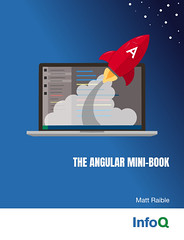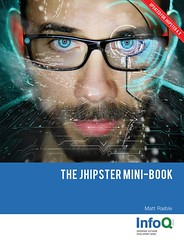I spent a few hours tonight integrating Facelets into an AppFuse-based application. The integrating was fairly easy thanks to the work Thomas Gaudin did back in January. For the most part, it was just a matter of 1) replacing <fmt:message> tags with #{text['key']} tags, 2) replacing the <%@ include file="/common/taglibs.jsp"%> at the top of each page with Facelet's namespace tags and 3) renaming the pages from *.jsp to *.xhtml. The only thing that tripped me up was I thought the "c" namespace was the same as JTLS's URI, but it's actually a whole new URI. Thanks to the Facelets developers for a much-needed fix for JSF.
After I got Facelets integrated and working, I dove into integrating Ajax4JSF. Two hours later and I have the simple repeater demo working. What took so long? I spent an hour staring at (and googling for) the solution to the following error:
PhaseListenerManager.informPhaseListenersBefore(74) | Exception in PhaseListener RENDER_RESPONSE(6) beforePhase.
java.lang.NullPointerException
at com.sun.facelets.FaceletViewHandler.writeState(FaceletViewHandler.java:759)
at org.ajax4jsf.framework.renderer.AjaxRendererUtils.writeState(AjaxRendererUtils.java:850)
at org.ajax4jsf.framework.renderer.AjaxRendererUtils.encodeAreas(AjaxRendererUtils.java:740)
at org.ajax4jsf.framework.renderer.AjaxContainerRenderer.encodeAjax(AjaxContainerRenderer.java:128)
at org.ajax4jsf.ajax.UIAjaxRegion.encodeAjax(UIAjaxRegion.java:210)
The solution turned out to be removing the FaceletsViewHandler from faces-config.xml:
<view-handler>com.sun.facelets.FaceletViewHandler</view-handler>
Also, it seems the following is required in web.xml:
<context-param>
<param-name>org.ajax4jsf.VIEW_HANDLERS</param-name>
<param-value>com.sun.facelets.FaceletViewHandler</param-value>
</context-param>
Hopefully this helps others googling for the exception above.




